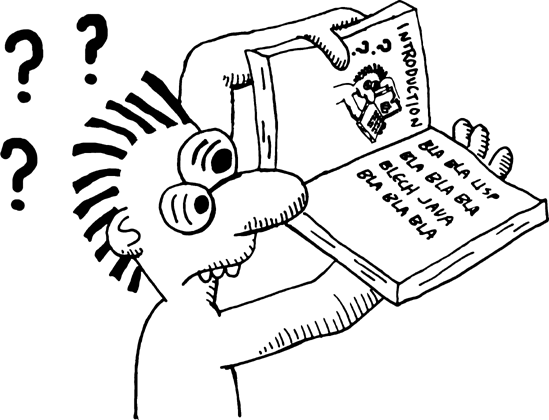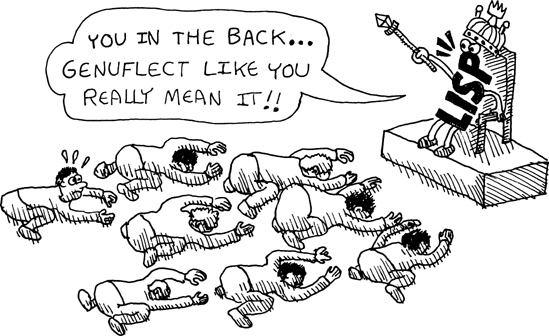So, you’ve decided to pick up a book on Lisp and read the introduction. Perhaps you were surprised to see something that looks like a comic book mixed in with the other computer programming books on the shelf. Who would bother writing a comic book about a weird academic programming language like Lisp? Or maybe you’ve heard other people raving about the Lisp language and thought, “Boy, Lisp sure sounds different from other languages people talk about. Maybe I should pick up a Lisp book sometime.” Either way, you’re now holding a book about a programming language that is very cool but also very unusual.
Lisp is a very expressive language. Lisp is designed to let you take the most complicated programming ideas and express them in a clear and appropriate way. Lispers have the freedom to write a program in exactly the way that is most helpful for solving any problem at hand.
The power at your fingertips when writing Lisp code is what makes it so different. Once you “get” Lisp, you’ll be forever changed as a programmer. Even if you end up never writing Lisp code again for the rest of your life, learning Lisp will fundamentally change you as a coder.
In a way, learning a typical programming language is similar to learning a foreign language as an adult. Suppose you go out tomorrow and decide you’re going to learn French. You may take every course on French that you can find, read materials that are only in French, and even move to France. But no matter what you do, your understanding of French will always remain a little imperfect. And no matter how good of a French speaker you eventually become, in your dreams you probably will still be speaking in your native language.
Lisp is different. It’s not just like learning any foreign language. Once you’ve learned Lisp, you’ll even dream in Lisp. Lisp is such a powerful idea that it will crowd out your previous programming experience and become your new mother tongue! Whenever you encounter a new programming idea in any language, you’ll always say to yourself, “That’s kind of how I’d do it in Lisp, except . . . .” That’s the kind of power only Lisp will give you.
At this point, all you may know about Lisp is that at least one person (me) is extremely excited about it. But your time is valuable, and learning something new is bound to require some effort.
The good news is Lisp isn’t really as difficult as it may seem at first glance. For instance, the following is a valid Lisp expression:
(+ 3 (* 2 4))
Can you guess what the value of this expression is? If you answered 11, then you’ve already figured out how to read basic Lisp code. It is written just like math, except that the functions—in this case, addition and multiplication—come before the numbers, and everything is in parentheses.


